
When it comes to investing in the stock markets there are multiple strategies. There is value investing where you identify stocks that are trading at a discount to their intrinsic value. Basically, these stocks are undervalued but have a strong economic moat as well as robust fundamentals, making them solid long-term picks for investors.
In the last decade, growth stocks, especially from the technology sector, have created massive wealth for investors. Growth stocks are companies that increase their revenue and earnings at a faster rate compared to the overall market. These tickers generally have a high beta which means they will outperform the broader indexes in a bull run but may grossly underperform in a market sell-off.
Alternatively, investors can also look at dividend investing as an option to create wealth in the equity markets. A company that generates consistent profits may decide to allocate a portion of its net income to shareholders in the form of dividends.
Now, dividend investing is a strategy where you buy stocks of companies that pay dividends. Here, investors can benefit from a passive income stream that can be withdrawn or reinvested to benefit from the power of compounding.
Compare dozens of Canadian Online Brokers platforms and find the one that best suits your needs
The basics of dividend investing
One of the primary reasons why dividend investing has always remained popular is because this strategy allows the investor to benefit from a steady stream of dividend income as well as via long-term capital gains.
It is also a strategy that is attractive to investors who have a lower risk appetite. Companies that pay dividends to shareholders tend to have a low beta and a business model that allows them to generate predictable cash flows across economic cycles. However, as is the case with several equity investments, even dividend stocks can be a risky proposition especially if you don’t know what you are looking for.
What is the dividend yield?
One of the most important metrics for dividend-paying companies is the dividend yield also known as the forward yield. For example, if you buy 100 shares of Enbridge stock that is currently trading at $45.35, you will have to invest $4,535. Now Enbridge pays an annual dividend of $3.34 per share which means you will derive $334 in yearly dividends.
This indicates a tasty yield of 7.36% which is really impressive given that bond rates are less than 2%. Now, you can either reinvest these dividends to buy more shares of Enbridge or shares of any other company. Alternatively, you can withdraw this payout and keep it in your savings account or even use it to pay your utility bills.
Investors will benefit from regular dividend payouts irrespective of the company’s stock price which might move higher or lower over the year. You will receive the payouts as long as the company’s Board of Directors authorizes these payments.
Companies that pay a dividend generally do so on a quarterly basis. A few companies also pay dividends each month. Now, it is difficult for companies to consistently maintain these payments across business cycles. Like we have seen several companies across sectors reduced or entirely suspended their dividend program amid the COVID-19 pandemic.
It is thus imperative to identify a portfolio of dividend-paying companies that have a strong balance sheet and the ability to generate stable cash flows irrespective of the state of the economy. When you integrate the dividends with long-term capital gains the total returns should normally outpace major indexes.

How to evaluate dividend stocks?
Now that we have covered the basics of dividend investing, let's take a look at the key metrics required to evaluate these companies. You need to understand which dividend-paying company to buy and hold over the long-term. The below financial metrics will help the investor understand if a company is worth investing in or not, as well as identify potential red flags.
If you're thinking of buying stocks on your own, find the best online broker for you with our comparing tool.
Dividend Yield
As seen above, the dividend yield is calculated as a percentage of a company’s stock price. So, in case a stock trades at $100 and pays an annual dividend of $5, the dividend yield would amount to 5%.
While a higher dividend yield is always attractive you need to understand that it is inversely related to the stock price. For example, if the stock price of the company falls by 25% to $75 its dividend yield will increase to 6.7%.
A high yield can hence be a red flag for investors. Canada-based Chemtrade Logistics Income Fund has a forward yield of 8.6%. However, the company cut its dividend payout by 50% in 2020 and the stock has lost 65% in market value since September 2017 as well. It's clearly a stock that has burnt massive investor wealth.
Ideally, a dividend-paying company should have the ability to at least maintain its dividend and grow it over time.
Payout ratio
This is another important metric investors should use while evaluating dividend stocks. The payout ratio is calculated as a percentage of a firm’s net earnings. So, if the firm earns $5 per share as its net income and pays dividends of $3 per share, it has a payout ratio of 60%.
If the payout ratio is low, it means the company has more room to reinvest its earnings in capital expenditures which in turn will bring in additional cash flows. Alternatively, the company can also look to increase dividends.
Capital gains
Capital gains are calculated as the increase in a company’s stock price as well as dividends paid. So, in the case of the above company, if its stock price increases to $105 and it pays a dividend of $5, then you would have derived annual returns of 10%.
Any company that consistently outpaces the broader markets in terms of total capital gains is a good stock to buy and hold.
Earnings per share
The EPS (earnings per share) ratio is derived by dividing a company’s net income by the total number of shares outstanding. It basically tells you the amount of money a company makes for each outstanding share.
Now, you need to shortlist companies that have grown earnings over time. This indicates the company is able to improve its bottom-line which in turn will help it sustain dividend payments.
Price to earnings
The price to earnings multiple is a popular valuation ratio that shows us how expensive a stock is. It is calculated by dividing the price of a stock by its EPS. As a rule of thumb, in case a company’s P/E ratio is lower than the sum of its earnings growth and dividend yield, it is undervalued and vice versa.

You need to avoid the dividend yield trap
Investors without any experience in the equity markets might equate a high yield as an attractive investment opportunity. However, as we have seen above, while a high yield is a good filter to identify dividend stocks, you need to look at the reasons behind these figures.
In case a stock continues to spiral downwards, it means it is fundamentally weak or is impacted by macro-economic factors. It may also lead to a dividend cut which may further impact the stock price. So, how do you avoid falling into a dividend yield trap?
Just buying stocks due to their high yield is a recipe for disaster. If a company has a forward yield that is significantly higher than its industry peers, it may be a red flag. You need to look at the company’s payout ratio as well as analyze its balance sheet, income statements, and cash flows.
A company with a stellar dividend history and one that has increased dividends each year indicates that it has a solid business model that allows it to generate cash flows to support an increase in payouts.
It's always better to buy a stock with a lower dividend yield that is sustainable compared to a stock with a high yield that may be rolled back if markets turn ugly.
Long-term investors that aim to grow their savings can look at DRIPs (dividend reinvestment plan) to achieve financial goals. The DRIP is a robust tool that allows you to reinvest the dividends you earn to buy additional shares of the company. This is done without charging any fees or commissions and is one of the ways to benefit from the power of compounding.
Dividends are not a guarantee
Investors need to understand that dividend payments are not a guarantee and can be suspended at any time. When oil prices crashed in 2020, several companies such as Suncor Energy cut their dividends. Many others suspended their payouts indefinitely.
Dividends are part of a company’s profits. Generally, a company can look to reinvest its net income to expand its capital expenditure program, lower its debt or acquire other companies to benefit from inorganic growth.
Dividend payments are not compulsory and if a company is looking to reduce costs or is grappling with negative profit margins, there is a good chance for dividends to be at risk.
It is thus imperative to build a portfolio of quality dividend-paying companies across sectors to mitigate risks. Like every other asset class, it is not possible for dividend investors to eliminate their risk completely.

Here we look at 20 dividend-paying Canadian companies that should be on your watchlist right now.
Canada’s Dividend Aristocrats
These companies have managed to increase their dividend yields for at least 25 consecutive years.
 Fortis
Fortis
Another utility stock on the list is Fortis. Utility companies are regulated, which helps them generate stable and predictable cash flows. People will continue to pay their electricity and gas bills even when they are unemployed making this industry fairly recession-proof.
Fortis is an electric gas and utility company that generates, transmits, and distributes electricity to 433,000 retail customers in Canada, the U.S., and the Caribbean. It also sells wholesale electricity to enterprises south of the border.
Fortis has managed to increase its dividend payments for 46 consecutive years. In the last five years, it has increased dividends at an annual rate of 7.4%. Fortis stock is currently trading at $60.07 indicating a forward yield of 3.51%.
 Toromont Industries
Toromont Industries
Another Canada-based Dividend Aristocrat is Toromont Industries, a company that provides specialized capital equipment in Canada and other international markets. Toromont Industries has two primary business segments that include CIMCO and Equipment Group.
The CIMCO business is involved in the design, engineering, installation, and after-sale support of refrigeration systems for the industrial markets. The Equipment business segment is involved in the sale, rental, and service of mobile equipment for Caterpillar and other manufacturers.
Toromont has increased its dividend payments for 30 consecutive years. In the last five years, it has increased dividends at an annual rate of 12.5%. Toromont stock is currently trading at $98 indicating a forward yield of 1.58%.
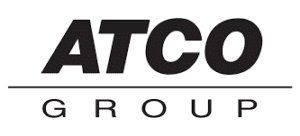 Atco
Atco
Atco is Alberta’s largest natural gas distribution company and is an ideal pick for investors with a low-risk appetite. It has a diversified base of cash-generating assets including power plants, electric power lines as well as hydrocarbon storage facilities.
Atco has 15 commercial real estate properties, 90,000 square feet of industrial property, and 315 acres of land. As its earnings are regulated, you can expect Atco’s cash flows to be predictable. The stock is trading at a depressed valuation with a price to book ratio of just 1.15x.
Atco has increased its dividend payments for 26 consecutive years. In the last five years, it has increased dividends at an annual rate of 13.5%. Atco stock is currently trading at $41.92 indicating a forward yield of 4.41%.
 Thomson Reuters
Thomson Reuters
One of the best-performing stocks on the TSX is an information service provider. Thomson Reuters has clients across industries including law, tax, accounting, financial services, and healthcare. Since the start of 2012, the stock has returned 265%.
The company has high operating leverage. Even if the company missed fourth-quarter earnings forecasts, it said would help deliver stronger-than-expected revenue growth this year and next. Thomson Reuters is mid-way through a two-year $600 million investment into a “Change Program” to transform itself from a holding company of different businesses to a more focused, content-driven technology company.
Thomson Reuters has increased its dividend payments for 26 consecutive years. In the last five years, it has increased dividends at an annual rate of 3.5%. Thomson Reuters stock is currently trading at $130 indicating a forward yield of 1.75%.
 Canadian National Railway
Canadian National Railway
Canadian National Railway (TSX: CNR) is a giant in Canada’s railway industry. The company owns and operates an extensive railway network that serves Canada and the United States. Its 33,000 km of railway tracks stretch from British Columbia to Nova Scotia and span south to Louisiana across the border. Its transportation services play a crucial role for various industries in the North American economy. The future is bright for the company. With gas resources decreasing and gas prices increasing, railroads will present more economic opportunities for retailers and companies.
C.N. Railway boasts a 25-year dividend growth streak, making it another top Canadian dividend aristocrat. In writing, C.N. Railway stock trades for $142 per share and has a 2% dividend yield. However, its 35.7% payout ratio means that the company can comfortably fund its dividend hikes for years to come.
Gold mining
A gold-bullish catalyst, which many North American retail investors never think about, is the recovering demand for gold jewelry globally. Recent quarters have demonstrated strong consumer demand for gold jewelry, particularly in emerging markets. Jewelry accounts for 50% of global gold demand, followed by central bank reserves at 25%, individuals at 15%, and industrial uses at 10%, according to iShares. Another contributing factor to consider is the demand for gold in a time when there are supply chain issues all over the world. Like other products, gold goes through several stages in its supply chain, beginning with mineral exploration and mining of underground reserves.
 Barrick Gold Corporation
Barrick Gold Corporation
Barrick Gold (TSX: ABX) has gold and copper mining operations and projects in 13 countries in North and South America, Africa, Papua New Guinea, and Saudi Arabia. Their diversified portfolio covers several of the world’s prolific gold districts and is focused on high-margin, long-life assets. On top of that, the company has a strong commitment to its shareholders. Over the year 2021, Barrick Gold returned a record $1.4 billion of cash to shareholders, including a $750 million return of capital. The Board has approved a share buy-back program of up to US$1 billion over 12 months. The company’s shares are trading in a price range that is incredibly low and does not reflect the value of its assets and future business prospects. Moreover, as of Q4 2021, the company raised the base quarterly dividend by a further ~11% to $0.10 per share.
Barrick has a 2% dividend yield and is traded at $25
 Newmont Corporation
Newmont Corporation
With ~8M Gold Equivalent Ounces per year, Newmont (TSX: NGT) is the world’s leading gold company and a producer of copper, silver, zinc, and lead. The company’s prime portfolio of assets, prospects, and talent is anchored in favorable mining jurisdictions in North and South America, Australia, and Africa. In their latest earnings, the company explained that the exploration expenditure for managed operations is expected to be approximately $250 million in 2022, with 80 percent of total exploration investment dedicated to near-mine expansion programs and the remaining 20 percent allocated to the advancement of greenfield projects. The company should gain traction in both its share price and dividends overtime.
The company is currently traded at $84 for a dividend yield of 2.83%.
Canada’s energy giants
In the last year, energy stocks have been under the pump. This has increased the dividend yields of several companies making them attractive to the income investor. Here, we look at three such energy stocks that have strong fundamentals.
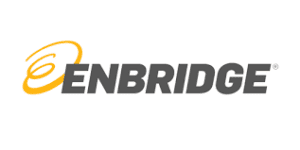 Enbridge
Enbridge
Enbridge is a midstream energy giant that has generated steady earnings across business cycles. It’s involved in the transportation and distribution of crude oil and natural gas. Its fee-based business insulates the company from fluctuations in commodity prices.
ENB is currently traded at $56.46, has a forward yield of 6.09%, and the firm has increased dividends at an annual rate of 10% since 1995.
Enbridge said it expects to place $10 billion of projects into service this year which will help it increase distributable cash flows between 5% and 7% through 2023.
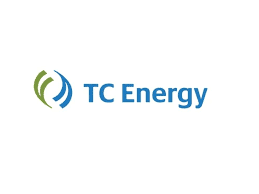 T.C. Energy
T.C. Energy
T.C. Energy is also a pipeline company with a diversified base of operations. A piece of positive news for investors: the energy infrastructure giant increased its quarterly dividend by 3.4% to 90 Canadian cents per share (or C$3.60 per share annualized). Highlighting the company’s long and consistent dividend-paying record, TRP has increased its payout in each of the last 22 years.”
Over the last quarter, TRP increased its EBITDA: C$2.4 billion in the September quarter, up from C$2.32 billion in the prior-year period. This North America-based energy infrastructure provider’s quarterly revenues of $2.84 billion increased 12.3% year over year.
T.C. Energy has a number of projects that will help it expand its natural gas infrastructure portfolio in North America. Further its ongoing capital expenditures will fuel dividend increases between 5% and 7% in the near-term.
The company is traded at $66 and has a dividend yield of 5.4%.
Canadian Natural Resources
Canadian Natural Resources (CNQ.TO) is an effective and efficient operator with a diversified portfolio of assets in North America, the UK North Sea and Offshore Africa, which enables us to generate significant value, even in challenging economic environments. The company continually strive for safe, effective, efficient and environmentally responsible operations while executing economic development of our diverse asset base.
Its balanced mix of natural gas, light crude oil, heavy crude oil, bitumen and synthetic crude oil (SCO) represents one of the strongest and most diversified asset portfolios of any independent energy producer in the world. The company has completed its transition to a long life low decline asset base through the development of its Horizon oil sands mine and acquisition of Athabasca Oil Sands Project (AOSP), its vast thermal in situ opportunities and the expansion of its world class polymer flood project at Pelican Lake. This transition forms the basis of the company’s sustainable free cash flow.
The company is currently traded at $67.9 for a dividend yield of 4.42%
 Capital Power
Capital Power
Capital Power (TSX: CPX) has focused its strategy on being a growth-oriented North American wholesale power producer with a strategic focus on sustainable energy. Headquartered in Edmonton, Alberta, Canada, Capital Power builds, owns and operates high-quality, utility-scale generation facilities that include renewables and thermal. The company has also made significant investments in carbon capture and utilization to reduce carbon impacts and is committed to be off coal in 2023.
The company's straightforward business model focuses on generating stable and growing cash flows from a contracted and merchant portfolio, which is supported by an investment-grade credit rating. We have a history of dividend growth with guidance of 5% annual growth through 2025.
Capital Power creates and enhances shareholder value by generating power from well-maintained and efficiently operated plants, responsibly managing its business to maximize opportunities and minimize risk from an environmental, social and governance (ESG) perspective, and through investing in disciplined growth opportunities.
The company is currently traded at $44 for a dividend yield of 5%.
Banking companies
Another sector that was hurt amid the COVID-19 pandemic was banking. The rising risk of defaults and a low-interest-rate environment sent stocks of banking companies spiralling downwards.
However, Canada’s banking heavyweights are fundamentally strong and have survived multiple recessions including the financial crash of 2008-09.
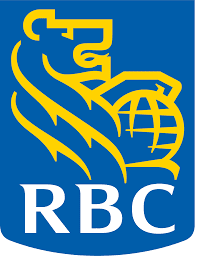 Royal Bank of Canada
Royal Bank of Canada
The Royal Bank of Canada is the second-largest Canadian company in terms of market cap. It is also one of the 15 largest banks in the world. Now, as interest rates might move higher, there is a good chance that RBC will be able to improve net interest margins and profitability going forward.
The board of directors has declared a quarterly common share dividend of $1.20 per share, payable on and after May 24, 2022, to common shareholders of record at the close of business on April 25, 2022. The company has a great history of growing that dividend by around 7.5% every single year.
In the fiscal first quarter of 2022, RBC reported net income of $4.1 billion for the quarter ended January 31, 2022, up $248 million or 6% from the prior year, with strong diluted EPS growth of 7% over the same period.
The stock is now trading at $125 indicating a forward yield of 4%.
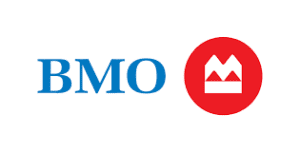 Bank of Montreal
Bank of Montreal
Bank of Montreal is another major Canadian bank and is focused on gaining traction in the U.S.. BMO's policy is to maintain a dividend payout ratio of 40% to 50%, over time, which makes its dividends sustainable and safe. The fifth-largest Canadian bank has a wide moat of revenue sources which means it is well diversified.
BMO's first-quarter fiscal 2022 (ended Jan 31) adjusted net income of C$2.58 billion ($2.04 billion) increased 27% year over year. BMO recorded higher revenues and a rise in loans and deposit balances, which supported results.
Bank of Montreal operates through 1,400 branches and 4,800 automated banking machines in Canada and the U.S. BMO stock is trading at $125 which suggests a forward yield of 4.4%.
Canadian Imperial Bank of Commerce
Canadian Imperial Bank of Commerce (CM.TO) is a diversified financial institution that offers many financial products to the personal and business sectors. That includes chequing, savings, and business accounts; loans and lines of credit for homeowners, entrepreneurs, and students; and credit cards and investment services. They serve clients all over the world through four business units: Canadian Personal and Small Business Banking, Canadian Commercial Banking and Wealth Management, U.S. Commercial Banking and Wealth Management, and Capital Markets.
The company is currently traded at $62 and has a dividend yield of 5%.
Real Estate Investment Trusts
Real estate investment trusts or REITs are an excellent addition to your portfolio. If you want to gain exposure to Canada’s real estate market, you can invest in REITs without having to burn significant cash.
Here, we look at a few Canadian REITs that you can buy and hold over the long-term.
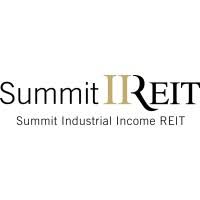 Summit Industrial Income REIT
Summit Industrial Income REIT
Summit Industrial Income REIT is an open-end REIT that focuses on growing and managing a portfolio of light industrial properties in Canada. The REIT has properties that are generally single-story buildings. The properties are located close to major cities or key transportation links.
Summit Industrial REIT claims that light industrial properties generally derive returns that are near the top of Canada’s real estate industry. These properties are often associated with lower market rent volatility as well as lower operating costs, capital expenditures and maintenance costs too.
Summit Industrial stock is trading at $16, indicating a forward yield of 3.5%.
 Killam Apartment
Killam Apartment
The final REIT on this list is Killam Apartment, a Halifax-based company. It is one of Canada’s largest residential landlords that owns, manages, and develops a portfolio of residential apartments valued at over $3 billion. Killam is looking to enhance shareholder value and profitability by increasing earnings from existing operations, expanding its portfolio via accretive acquisitions, and developing high-quality properties in core markets.
For the first quarter of 2022, the company reported a net income of $74.8 million, an increase of $26.2 million compared to $48.6 million in Q4-2020, and realized a 160 basis points improvement in same property apartment occupancy, achieving 98.1% occupancy in the quarter, the highest Q4 occupancy in Killam's history.
Killam Apartment stock is trading at $17, indicating a forward yield of 4%.
Telecom companies
Similar to utilities and healthcare, the telecom sector can also be considered recession-proof. Here, we look at two Canadian telecom giants that should be on your dividend watch right now.
 Telus Corp.
Telus Corp.
Telus provides a range of telecom and information technology products and services to Canadians. The company operates through its Wireless and Wireline businesses. The Wireless segment generates sales from network revenue that include data and voice, as well as equipment sales from mobile technologies.
Telus has 16 million subscriber connections that include 9 million mobile phone subscribers, 1.8 million mobile connected device subscribers, 2.1 million internet subscribers, 1.2 million T.V. subscribers, 1.2 million residential voice subscribers, and over 700,000 security subscribers.
Telus stock is trading at $28, indicating a forward yield of 4.7%.
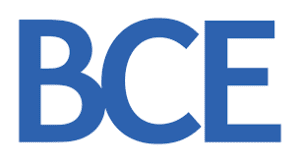 BCE Inc.
BCE Inc.
BCE Inc. is one of the largest telecom companies in Canada that offers subscription-based internet, wireless, wired, and T.V. services to millions of customers. It also operates one of the largest media businesses in Canada that include several radio and T.V. stations.
The demand for wireless connectivity surged ahead in 2020, as the work from home trend accelerated at a rapid pace. The COVID-19 pandemic acted as a tailwind for several tech and telecom firms and helped to increase an already impressive moat for BCE. BCE stock is trading at $62, indicating a forward yield of 5.9%.
Renewable energy
The renewable energy sector provides a great opportunity for investors looking to generate substantial returns. The demand for clean energy solutions is set to explode in the upcoming decade making this a really interesting sector right now.
 TransAlta Renewables
TransAlta Renewables
TransAlta Renewables develops, owns, acquires, and operates several renewable power generation facilities. At the start of March, the company had a portfolio of 23 wind facilities, 13 hydroelectric facilities, and seven natural-gas generation facilities. Additionally, it also has a solar facility, and a natural gas pipeline.
For the full year 2021, the company reported an adjusted EBITDA of $463 million, consistent with 2020, and cash flow from operating activities of $336 million, an increase of 26% from 2020. For 2022, the company targets an adjusted EBITDA range of $485 million to $525 million, up 9% from 2021 at the mid-point.
TransAlta stock is trading at $16, indicating a forward yield of 5.7%.
 Algonquin Power & Utilities
Algonquin Power & Utilities
Algonquin operates a portfolio of regulated and non-regulated generation, distribution, and transmission utility assets in North and Central America. The company sells power through its non-regulated renewable and clean energy power generation facilities. It owns and operates hydroelectric, wind, solar and thermal facilities and has a generating capacity of 2.1 gigawatts.
Algonquin serves around 306,000 electric connections, 371,000 natural gas connections and 409,000 water distribution connections. For 2021, the company reported an annual adjusted EBITDA of $1,076.9 million, an increase of 24%.
Arun Banskota, President and Chief Executive Officer of AQN:”Looking forward, we remain confident that the Company's $12.4 billion capital expenditure plan from 2022 through 2026 will continue to drive long term shareholder value.”
Algonquin stock is trading at $17, indicating a forward yield of 5.5%.
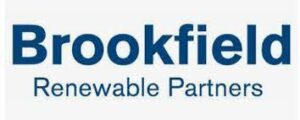 Brookfield Renewable Partners
Brookfield Renewable Partners
Brookfield Renewable Partners has been a solid wealth creator for long-term investors. Since the start of this millennium, the stock has generated an annual return of 18%. The company owns a portfolio of renewable power generating facilities in North and South America, Europe, and Asia.
The company represents a safe asset despite geopolitical troubles and is considered a market-beating stock. Shares are up 142% over the past five years, outperforming the S&P/TSX Composite Index.
Its portfolio consists of 19,000 megawatts of installed capacity. Shares of Brookfield Renewables are trading at $43 which means its forward yield stands at 3.7%.
The final takeaway
We know it's impossible to eliminate risk while holding dividend stocks in your portfolio. However, investors can look to lower risk and create a passive income stream by purchasing blue-chip dividend-paying companies.
In case you aim to earn a stable income, you need to focus on companies that have a wide economic moat, solid fundamentals, and cash-generating assets.
In case you allocate $5,000 in each of the above-mentioned stocks right now, you will generate $4,900 in annual dividend income. Further, if these companies increase dividend payouts at an annual rate of 5% in the next decade, annual dividend income will rise to $8,000 at the end of the forecast period.
FAQ about Dividend Stocks in Canada
Companies pay dividends in order to attract investors by sharing profits with them. In most cases, only established companies with a recurring profit do this, in comparison with emerging companies that have to use their profit in order to expand at a faster pace. It also reduces the risk of big variations in the stock price as investors have to keep their shares a certain amount of time to be eligible for the dividends
At first glance, buying dividend stocks might be only interesting for the dividend return they provide to you. Besides, these stocks gather way more benefits than it seems. These companies have a long track of proven revenues and a sustainable management/industry. Moreover, dividend stocks offer the opportunity to receive a passive income and to see the stock taking more value in the long term.
Once the company pays cash dividends, you will receive the money directly in your brokerage account. The same applies to stock dividends; they will appear directly as additional shares in your investor’s account. To see if the company is paying through cash or stock dividends, you will have to do a little bit of work and go on the company's website to check how the dividends are paid.
The timeframe is defined by the company. The most common timeframe is quarterly dividends. You will also see companies paying monthly, semi-annually, or yearly dividends. Whether your receive monthly or quarterly, it won't change what you will earn. A $3 monthly dividend won't be different from a $9 quarterly dividend.
If you are Canadian, your TFSA account will be your best friend. Dividends from Canadian companies generated in this account won’t affect your taxable income. You won’t be subject to taxes if you decide to retire them from your account either. If you are looking for international diversification which is usually recommended, it is however considered as not desirable in a TFSA. You have to keep Canadian assets as much as possible in your TSFA to get the most benefits. U.S. stocks held in a TFSA are subject to 15% withholding tax on U.S. dividend income. The same would apply to other foreign stocks held in a TFSA, with rates starting at 15%, depending on the country. If you own U.S. stocks directly in your RRSP, there will be no withholding tax.
When you plan to buy dividend stocks, make sure to get them before the ex-dividend date. Typically, the ex-dividend date is two business days before the record date. The ex-dividend date represents the cut-off point for receiving the dividend. You have to own a stock prior to the ex-dividend date to receive the next dividend payment. You are not entitled to the next paid dividend if you buy a stock on or after the ex-dividend date.
A high dividend yield seems more than attractive, but you have to be cautious about it. As the dividend yield is indexed to the stock price, a drop from the share value will augment the ratio. For example, during the first trimester of the pandemic, all the oil companies’ stock prices plummeted, increasing the dividend yield ratio. Most of these companies cut their dividends to save the most cash possible to pursue their operations and keep the companies afloat. In general, dividend yields of 2% to 4% are considered strong, and anything above 4% can be a great buy but will be riskier.
No, stocks aren't the only ones paying dividends. ETFs (Exchange Traded Funds) also pay dividends. ETFs represent another low-risk investment to diversify your portfolio. Mutual funds, which are similar to ETFs, pay dividend as well and are as safe as dividends.








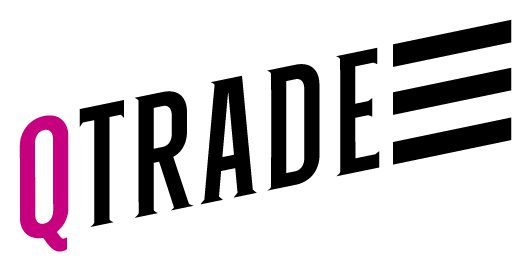















About The Author: Marc Challande
Passionate about investing, Marc co-founded Money,eh?, a website created for the purpose of helping all Canadians secure their financial future; those who want to grow their money, and clear all those unanswered questions they might have about personal finance & investments.
More posts by Marc Challande